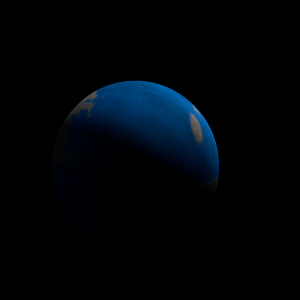|
|
Space Astro
|
Info for exoplanet "Panande'ka"
| Scientific (actual) data |
|---|
| Name | Kepler-1614 b |
| Planet status | Confirmed |
| Radius | 0.133 |
| Orbital period | 3.94661 |
| Discovered | 2016 |
| Updated | 2021-02-05 |
| Tconj | 2454970 |
| Publication | Announced on a website |
| Detection type | Primary Transit |
| Alternate names | 2MASS J18592912+4946332 b, K04566.01, KIC 11650401 b, KOI-4566 b, KOI-4566.01, WISE J185929.12+494633.2 b |
| Star name | Kepler-1614 |
| Right ascension | 284.87° |
| Declination | 49.78° |
| Mag j | 14.588 |
| Mag h | 14.053 |
| Mag k | 14.001 |
| Star distance | 982 |
| Star metallicity | -0.17 |
| Star mass | 0.79 |
| Star radius | 0.76 |
| Star age | 5.5 |
| Star temperature | 5121 |
| Star alternate names | 2MASS J18592912+4946332, KIC 11650401, KOI-4566, WISE J185929.12+494633.2 |
| Wikipedia article | Kepler-1614 b |
Back
| |
| Fictional info (?) |
|---|
| Suggested name | Panande'ka |
| Planet type | Cold planet |
| The outer atmosphere is visibly segregated into several bands at different latitudes, resulting in turbulence and storms along their interacting boundaries. |
| Atmosphere | Nitric oxide | 99% |
| Formaldehyde | 0.092% |
| Atmospheric pressure | 0.11 bar |
 |
| No known satellites |
| Google search for Panande'ka |
|
Website by Joachim Michaelis
|
|
|
|